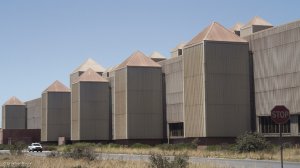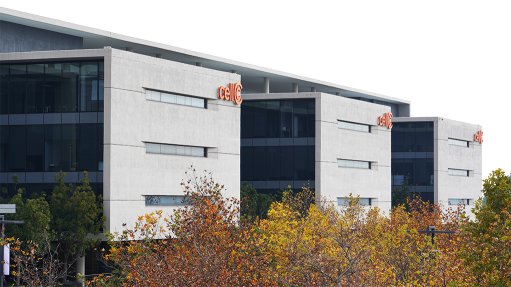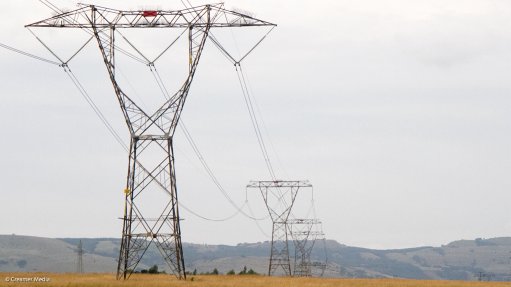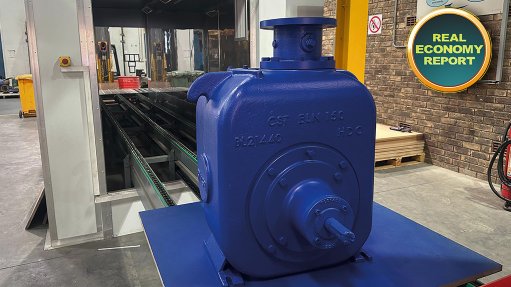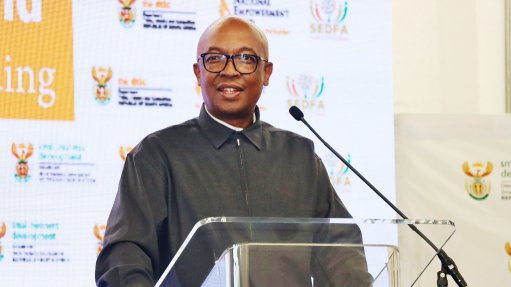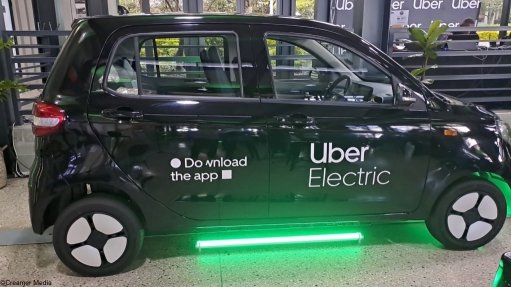Study under way into producing green direct reduced iron at mothballed Saldanha Works
Steel producer ArcelorMittal South Africa (AMSA) is moving ahead with a study into the production of green hydrogen directly reduced iron (gHDRI) at its mothballed Saldanha Steel Works, in the Western Cape.
Market and product development head Jerry Dungu told participants at an industry conference that the JSE-listed group had signed a memorandum of understanding with a “developer of transformational energy solutions” to advance the production of gHDRI at the plant.
He did not reveal the name of the company but highlighted that, since October 2022, AMSA and Sasol had been jointly studying the potential of developing Saldahna Bay into a hub for the production of green hydrogen and derivatives, such as gHDRI.
Demand for gHDRI is expected to rise strongly as steelmakers using electric arc furnaces (EAFs) seek to use the material to help decarbonise their production processes.
Dungu confirmed that the investigation would focus on using green hydrogen in the Saldanha Works’ Midrex process to produce gHDRI, which could be exported or used domestically.
When the Saldanha Works was operating, process gases produced in the Corex plant, were used in the Midrex plant. However, it is believed that the Midrex plant can be converted to be either traditional natural gas-based and/or to use green hydrogen.
There is a growing expectation that South Africa could emerge as a low-cost producer of green hydrogen, owing to its natural resource endowments of sun, wind and land, which together with electrolyser costs, are the main drivers of cost competitiveness.
Green hydrogen is produced by splitting water into hydrogen and oxygen using an electrolyser that employs renewable electricity and there is a global drive to reduce production costs from between $5/kg and $3/kg currently to below $1/kg.
Should green hydrogen be produced competitively on the West Coast, possibly using desalinated water, there is potential for the Saldanha Works to emerge as a large source of green hydrogen demand, consuming up to 104 000 t/y in the production of gHDRI.
The gHDRI concept features in ArcelorMittal’s Decarbonisation Roadmap, but Dungu told Engineering News on the sidelines of a Steel and Engineering Industries Federation of Southern Africa conference that it was not part of the group’s immediate plans for reducing its carbon intensity.
Under the roadmap, AMSA is targeting to lower the carbon intensity of every ton of steel produced from 2.9 tons of carbon dioxide equivalent (tCO2e) in 2018 to 2.16 tCO2e by 2030 and 0.4 tCO2e by 2050.
To do so, various initiatives are being pursued, including integrating renewable electricity at its mills, replacing a blast furnace at Vanderbijlpark with an EAF and introducing carbon capture and utilisation at the same operation.
Under its partnership with Sasol, AMSA is working on a plan to redirect its captured CO2, via pipeline, to the chemical and energy group’s Sasolburg complex some 20 km away, where it will be used to produce chemicals and plastics.
University of Cape Town honorary research associate Hilton Trollip, who has been studying the decarbonisation of the steel value chain for several years, said gHDRI was now almost certain to be a central component of decarbonisation of world steelmaking and that South Africa was well positioned to be a low-cost producer.
He argued that there were several advantages to exporting South African-produced green hydrogen “embodied” in gHDRI, including ease of transport and storage, and that it was in the interests of the European steel industry to foster the development of low-cost exporters, such as South Africa.
However, subsidy support for green transitions in Europe, the US and China could place developing countries at a disadvantage, while raising the global cost of decarbonisation.
Trollip argued that there was a need to level the international playing field by directing support the way of primary steel manufacturing in developing countries, including South Africa.
Meanwhile, SMS Group MD Pieter Bezuidenhout said the technical solutions were already available to decarbonise steel production, as well as to produce climate-neutral steel using green hydrogen to produce DRI that could be used with scrap in an EAF.
Bezuidenhout highlighted the H2 Green Steel project, in Boden, Sweden, which will use hydrogen produced from renewable electricity, rather than coal, to produce steel in a process that will emit 95% less CO2 than steel produced using traditional blast furnace technology.
Article Enquiry
Email Article
Save Article
Feedback
To advertise email advertising@creamermedia.co.za or click here
Comments
Press Office
Announcements
What's On
Subscribe to improve your user experience...
Option 1 (equivalent of R125 a month):
Receive a weekly copy of Creamer Media's Engineering News & Mining Weekly magazine
(print copy for those in South Africa and e-magazine for those outside of South Africa)
Receive daily email newsletters
Access to full search results
Access archive of magazine back copies
Access to Projects in Progress
Access to ONE Research Report of your choice in PDF format
Option 2 (equivalent of R375 a month):
All benefits from Option 1
PLUS
Access to Creamer Media's Research Channel Africa for ALL Research Reports, in PDF format, on various industrial and mining sectors
including Electricity; Water; Energy Transition; Hydrogen; Roads, Rail and Ports; Coal; Gold; Platinum; Battery Metals; etc.
Already a subscriber?
Forgotten your password?
Receive weekly copy of Creamer Media's Engineering News & Mining Weekly magazine (print copy for those in South Africa and e-magazine for those outside of South Africa)
➕
Recieve daily email newsletters
➕
Access to full search results
➕
Access archive of magazine back copies
➕
Access to Projects in Progress
➕
Access to ONE Research Report of your choice in PDF format
RESEARCH CHANNEL AFRICA
R4500 (equivalent of R375 a month)
SUBSCRIBEAll benefits from Option 1
➕
Access to Creamer Media's Research Channel Africa for ALL Research Reports on various industrial and mining sectors, in PDF format, including on:
Electricity
➕
Water
➕
Energy Transition
➕
Hydrogen
➕
Roads, Rail and Ports
➕
Coal
➕
Gold
➕
Platinum
➕
Battery Metals
➕
etc.
Receive all benefits from Option 1 or Option 2 delivered to numerous people at your company
➕
Multiple User names and Passwords for simultaneous log-ins
➕
Intranet integration access to all in your organisation




